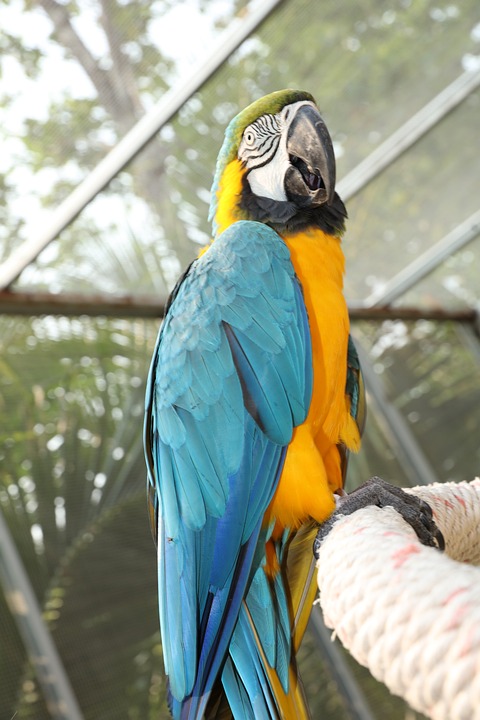Parrots are highly intelligent and social birds known for their inquisitive nature. As a parrot owner, it’s crucial to understand and recognize signs of curiosity and exploration in your feathered friend. This article will guide you through the various behaviors and body language that parrots exhibit when they are curious or exploring their surroundings. Additionally, we will address some frequently asked questions to help you better understand your parrot’s behavior.
When a parrot is curious or exploring, it often expresses itself through vocalizations. You may notice your parrot making a variety of sounds, such as chirping, whistling, or mimicking human speech. These vocalizations are their way of communicating and showing their interest in their environment.
Observe your parrot’s head movements when it is curious or exploring. Parrots tend to tilt their heads to get a better view or to show attentiveness. If your parrot is intrigued by something, it may even bob its head up and down or side to side. This behavior signifies engagement and curiosity.
The movement of a parrot’s tail can also indicate curiosity. When a parrot is exploring or investigating something, it may hold its tail in an upright position, slightly fanned out. This tail posture shows that the parrot is alert and focused on the object or situation at hand.
Curiosity can also manifest in the form of preening and feather ruffling. When a parrot encounters something new, it may start preening its feathers or ruffling them to express interest or excitement. This behavior helps them examine their surroundings and engage with the new stimuli.
Parrots are natural explorers, and their inquisitive nature is often displayed through investigative behavior. They may use their beaks, feet, or even climb onto objects to explore their environment. Pay attention to your parrot’s movements, as it may investigate toys, perches, or even household items, showcasing its desire to learn and discover.
One prominent sign of curiosity in parrots is their playfulness and increased interaction. When a parrot is curious, it may engage in games, such as tossing toys, playing with objects, or even seeking attention from its human companion. This behavior indicates their desire to explore and interact with their surroundings.
Now, let’s address some frequently asked questions about parrot behavior:
Q1. Why is it important to recognize signs of curiosity and exploration in parrots?
Recognizing these signs allows you to understand your parrot’s needs and provide appropriate mental stimulation, preventing boredom and potential behavior issues.
Q2. How can I encourage my parrot’s curiosity and exploration?
Provide a stimulating environment with a variety of toys, perches, and safe objects for your parrot to investigate. Regularly rotate toys to keep their interest levels high.
Q3. Are there any signs I should be aware of to ensure my parrot’s safety during exploration?
Yes, be cautious if your parrot starts chewing on potentially harmful objects, such as electrical cords or toxic plants. Provide safe alternatives and supervise their exploration to prevent accidents.
Q4. Can parrot curiosity be a sign of aggression?
While curiosity is generally harmless, some parrots may display aggressive behaviors if they feel threatened or territorial. It’s essential to observe their body language and consult an avian behaviorist if you notice any concerning signs.
Q5. How can I reward my parrot’s curiosity and exploration?
Encourage and reward your parrot’s exploratory behaviors with positive reinforcement techniques like treats, praises, or attention. This will reinforce their curiosity and encourage further exploration.
In conclusion, understanding and recognizing signs of curiosity and exploration in parrots is key to promoting their mental well-being and providing the appropriate environment for their needs. By observing their vocalizations, head and tail movements, investigative behavior, and playfulness, you can better engage with your parrot and foster a fulfilling relationship. Remember, a curious parrot is a happy parrot!









